Service area: Multicultural communities
Our multicultural society influences our libraries and their functions. Areas for browsing and reading multicultural resources are needed, as well as spaces for social contact with people of similar backgrounds and interests.
Multicultural community of NSW
Multicultural NSW reports that 1 in 5 people in NSW speak a language other than English at home and over 1 in 4 people were born overseas, 1 in 5 from a non-English speaking background. 2016 census results show an increase in those born overseas and those from non-English speaking backgrounds since the 2011 census.
In 2016–17, over a quarter of a million people settled permanently in Australia over one third of these settled in NSW with the majority settling in the Sydney metropolitan area.
According to the NSW government, there are more than 275 languages spoken in NSW and 144 religions are practised. The top 5 languages (other than English) are Mandarin, Arabic, Cantonese, Vietnamese and Greek.
Impact on library design and function
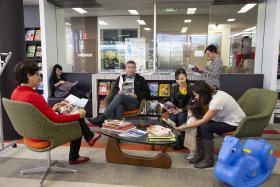
The increased provision of multilingual collections, multilingual signage and English language classes is evident in many libraries across NSW. Many people from multicultural backgrounds enjoy using their local library and view it as a place for social contact with other residents from similar backgrounds and connecting with people from the broader community.
The impact of multiculturalism on the physical design of the library is perhaps less evident. However there is a need to ensure that there are prominent areas for browsing and reading multicultural resources, as well as meeting room and lounge areas for social contact with people of similar backgrounds and interests. In supporting diverse cultures within a community, many successful libraries have offered areas for exhibition and events, particularly with flexibility to hold performances and festivals both inside and out.
Planning informed by local demographic data
Use of up to date local demographic data is important for library service planning. Councils should not limit this to the ABS Census data as this may not be reflective of emerging and changing communities. The NSW Department of Planning, Industry and Environment provides access to population projections and other demographics. Your council might have its own sources of local data.
Multicultural resources
Library collections should represent the local community and planning for a library building should include space for Culturally and Linguistically Diverse (CALD) resources and collections. These should include resources in languages other than English as well as CALD local studies collections, such as local migrant history collections and oral histories.
A number of libraries in NSW specialise in foreign language collections in response to the demographic of the local population. In some cases the popularity of the collection far outweighs the proportion of the demographic, making these libraries a destination for users from outside their local government area. In addition to books, these collections provide newspapers, magazines, exhibition material and DVDs.
Multicultural collection display
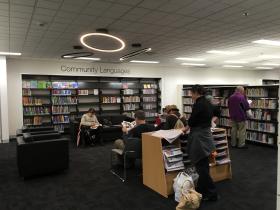
| 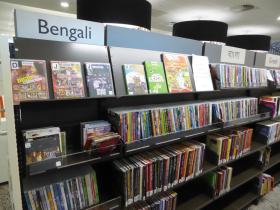
|
Signage
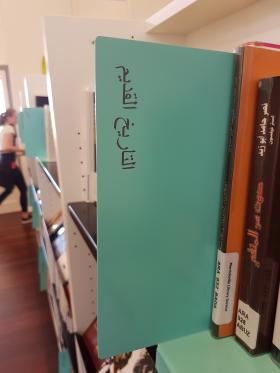
| 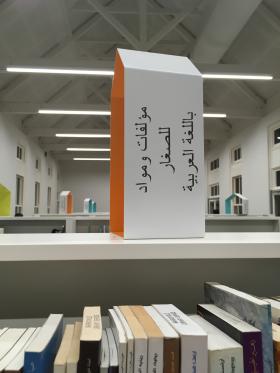
|
State Library of NSW: Multicultural Library Services
As local government moves towards improving its support of multicultural communities, other design and service innovations will occur. The Multicultural team at the State Library of NSW can advise on developing appropriate services. Promotional materials are also available to encourage increased visitation and borrowing.